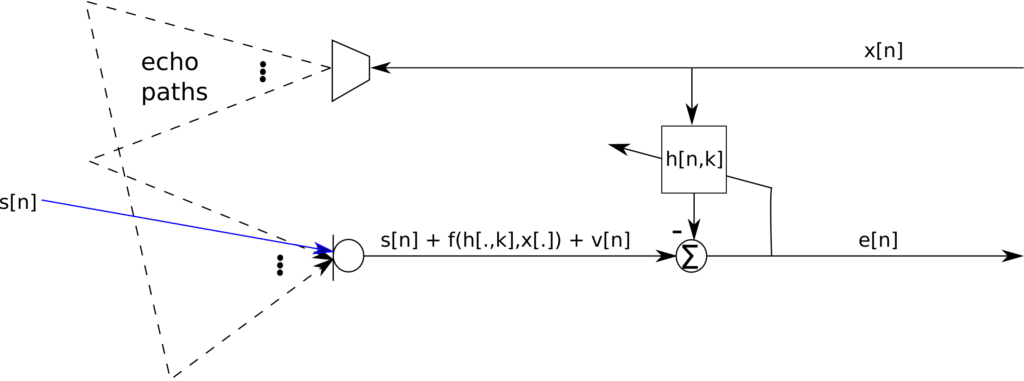A design challenge in AEC algorithms is the dual between fast convergence and cancellation accuracy in terms of ERLE. Whilst choosing a small step size will enhance the accuracy results, the convergence rate will be long which makes it quite impractical for RTOSs. A compromise has been the variable descent step size affine projection based algorithms. Consider the systems depicted in Figure 1 below:
Figure 1: Single line AEC architecture
Consider a classical affine projection algorithm which proceeds as:
where is the desired signal,
is the input matrix with each vector
of length
.
is a vector of the filter weights and
is the variable descent step size. It should be noted that
is the apriori error and the output of the system is the a posterior error defined as:
Replacing in (2) with (1) we get:
In the case where there is no near end speech, , which is the classical set up. However, in a more practical scenario, there is always near end signal. Denote the near end signal as
, then, using the second order statistics,
A heuristic is employed in estimating the second order statistics of both the near end speech and the error signal.
VOCAL Technologies offers custom designed solutions for beamforming with a robust voice activity detector, acoustic echo cancellation and noise suppression. Our custom implementations of such systems are meant to deliver optimum performance for your specific beamforming task. Contact us today to discuss your solution!
